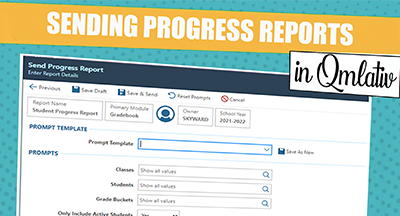The School Marketing Plan
|
Ray Ackerlund President |
Our schools need more marketing.
Whether I’m standing in front of a roomful of K–12 leaders at a user group, or reviewing internal metrics in my rarely used office, this is the common theme echoing in my head.
Many of the issues that get brought up most often in conversation with administrators—budget challenges, competition, and community relations—are the same topics I have to consider when looking over our annual marketing plan. Given how aligned our goals and pain points are, shouldn’t we be able to learn something from each other?
Let’s imagine what a school district marketing plan might include, and why you might want to consider it.
Public Relations
PR is one of those things we tend not to think about until it all goes south. I remember when staying out of the headlines was a public relations coup, but those days are coming to an end. Now, it’s not enough for school districts to mitigate bad press—many are actively seeking out opportunities for positive placements and reach.It’s rare to find a district anymore that does not employ a communications administrator of some kind. As the responsibilities and the position continue to evolve, I expect to see an even heavier emphasis on PR skills and experience. Without rehashing one of my previous posts in too much detail, I do think it is important to mention that the National School Public Relations Association (NSPRA) offers some valuable resources for districts of all shapes and sizes.
3 Key Areas to Focus On
Buzz monitoring: A big part of PR is knowing what people are saying about you at any given time and being able to relay that information to stakeholders. There are all kinds of inexpensive (even free) tools to help you curate media mentions. Getting a firm handle on public sentiment can go a long way toward helping you keep that sentiment positive.Media placement: When we analyze our PR efforts, we typically look at the number, type, and reach of placements, broken down by content type. Our PR pros track other data, including newsletter subscriptions and web activity, to measure how effective media placements are. This can be a helpful exercise as you start to get more proactive about pitching your success stories to local media outlets and major publications. Get your district’s name into the national conversation. Perhaps you want to place a certain number of editorials from your superintendent, or you want to measure the reach of student-driven communication projects. It’s no secret that the projects we choose to measure end up being the projects that get the most attention.
Crisis communications: When building our marketing plan, we make it a point to revisit our crisis communication strategy. If this is not already a part of your PR mix, we can’t stress enough how important it is to not only develop a detailed plan, but also assign a responsible party to maintain it through even the smallest organizational changes.
Just getting started? The Department of Homeland Security offers a detailed outline of the crisis communications plan at Ready.gov.
Digital Media
Years ago, we set our sights on a new frontier of marketing. Today, digital media is where your audience lives. Websites, videos, podcasts, social media, blogs are all a key part of successful districts’ engagement and awareness strategy. They should be core to yours, too.This is an exciting development—any district investing in digital media specialists can expect to see a positive impact in such critical areas as parent engagement, student achievement, and internal culture.
3 Key Areas to Focus On
Your website: To the outside world, you are what your website says you are. The website is where those who are considering a move to your community will go to see what you have to offer their children. It’s where highly qualified teachers, leaders, and office professionals will research your culture and look for job openings. Parents, students, and your larger community will rely on the site for resources and updates. Your website should provide a clear path for all three of these personas.Maybe you’re outsourcing your site right now, or maybe you’re struggling to maintain it with multiple staff members, all of whom have other responsibilities to tend to. The question here is, how much are high-performing candidates, higher enrollment numbers, and a more engaged community worth to you? That’s how important your website is.
Videos: Want to get a snapshot of where you stand with video? Head out to YouTube and search for your district. Many districts have started to explore video, and some dived right in to create their own channel. From internal professional development to community engagement, video can be a huge boost to many of your top priorities.
I can’t stress enough how easy it is to get started. While the ultimate goal would be to bring a full-time video professional in-house, there’s no harm in starting small. Students, teachers, and staff are a wealth of untapped resources—you’re likely to find at least a handful of talented amateur videographers among them. Your district is doing a lot of great things, and there’s no better medium than video to share that success with your community and the world.
Social media: The fact that we are asked to present on the topic of social media at our user groups makes it plain to me that many districts see its potential, and they’re right. Social is by no means a panacea, but at this point it is a core component of your digital presence and outreach efforts.
If your social infrastructure is still in its infancy, start by developing a strategy for the four or five networks you want to target. Your audience will be different on each, so tailor your message for maximum interactions. If you have already built up a following, set engagement goals and challenge your team to try at least one new approach for each platform in the coming year.
Branding
Strange as it might sound, your district needs a brand identity every bit as much as a for-profit corporation does. 29% of homebuyers cite school quality as a major factor in their decision. It’s clear “school choice” isn’t just a public vs. private school debate.Your brand is not just important in the quest for higher enrollment numbers. It’s also a key component of your internal culture. High-performers make all the difference between a run-of-the-mill organization and one that stands out from the crowd. In your case, student outcomes are at stake. A defined, visible, and influential brand can help you attract and retain the very best talent for years to come.
3 Key Areas to Focus On
Mission: Nearly every school and district has a mission statement. The biggest difference from one district to another lies in the application of this important message. Ideally, your mission statement should provide the guidepost for your future, the cornerstone of your decision-making, and the rallying cry for your team. Make this the centerpiece of your website, post it on the walls of every building, and map your initiatives and discussions to the relevant parts of the statement. If the mission feels like it needs a tune-up, collaborate to decide on a new one—sometimes a refresh is all it takes to achieve the buy-in you’ve been looking for.Differentiation: What is it that makes you different from the next district over or the charter school down the road? There will likely be crossover between your value proposition and your mission statement, but the trick to differentiating your district is to let that value pervade your communications to the point where the association between your brand and your differentiators solidify in the mind of your audience. Your ultimate goal is to create an association between your district’s name and the cornerstones upon which your educational experience is built.
Consistency: Your branding efforts are not a one-time proposition. This is something that will require both commitment and persistence. Every communication, every resource, and every event should be on-brand, with your mission and your objectives at the heart of it all. You won’t develop a strong brand overnight—you can only do that by building a strong track record of consistency and repetition.
This is where culture plays a huge role. If your internal culture is aligned with your brand, your entire staff will become extensions of that brand and evangelists of your message. That is the ultimate goal, and when it all comes together in a school district, it’s an amazing experience.
Getting Started
Whether your first order of business is public relations, digital media, or branding and awareness, the first step is to assemble a team of skilled, passionate people around you. This can be as simple as centralizing some of the scattered talent you already have, or adding a couple new positions when drawing up next year’s budget.The second thing to keep in mind is that good marketing can and should be measured. You’ll need some baseline metrics in place for all of these objectives before introducing the plan to your staff. If you can’t tell which of your activities are moving the needle and what your ROI is over time, you won’t be nearly as effective.
Education institutions around the world are starting to embrace the fact that marketing is no longer a “corporate” endeavor. Even if you’re not feeling the pinch of competition, you will need to find new and innovative ways to attract, develop, and retain the most talented teachers, administrators, and specialists. These are the people who will have a direct impact on your students for years to come.
There’s never been a better time to put your brand to work.

Follow-up resource: Build your brand
We've compiled a library of resources for school leaders learning about marketing, branding, and building a digital presence. Find out what you need to get started on the Build Your Brand insight page.Thinking about edtech for your district? We'd love to help. Visit skyward.com/get-started to learn more.
|
Ray Ackerlund President |

 Get started
Get started





